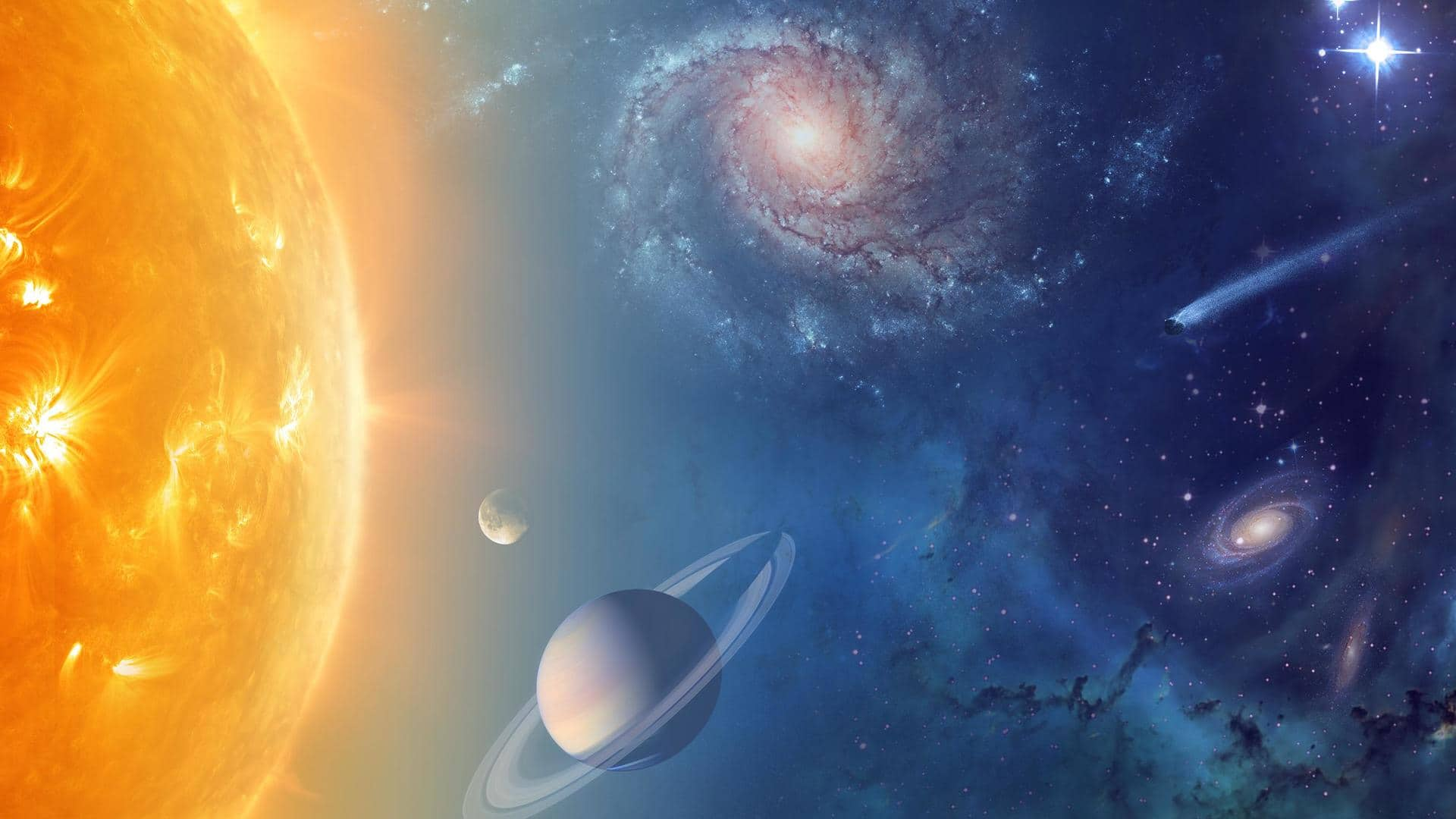
NASA's JWST makes surprising discovery of carbon in early universe
What's the story
Using NASA's James Webb Space Telescope (JWST), scientists have detected significant amounts of carbon in the early universe—about a billion years after the Big Bang.
Back then the universe was thought to contain lighter elements like hydrogen and helium. Heavier elements didn't come into the picture until later.
However, the latest findings suggest heavier elements are more commonplace than previously thought.
Context
Why does this story matter?
Among Webb's prime objectives is to provide insights into the cosmic history, of the various processes that shaped the universe as we know it today.
The telescope recently completed its first science anniversary. Slated to operate for at least a decade, we can expect the space observatory to uncover more about the cosmos than any of its predecessors.
Cosmic dawn
Cosmic Dawn: When the first stars and galaxies took shape
The first billion years after the Big Bang is referred to as Cosmic Dawn, a time when the first stars and galaxies started to take shape.
Stars form heavier elements at their cores in a process called stellar nucleosynthesis. These heavier elements accumulate until the stars run out of nuclear fuel and die, releasing their content into space—a process that takes some time.
Finding
Scientists looked at galaxies 800 million years after Big Bang
By means of Webb, scientists peered into the distant universe to study dust that formed from this particular time in the universe's history and found something surprising.
They discovered a strong feature associated with the absorption of light from carbon-rich dust in galaxies as early as just 800 million years after the Big Bang, according to ScienceAlert.
Explanation
Carbon could have been released due to dying stars
What's surprising is that these carbon-filled dust grains were assumed to have taken hundreds of millions of years to form.
So what explains the copious presence of carbon detected by Webb in these early galaxies in the Cosmic Dawn?
Scientists believe carbon could have been released as a result of the death of massive stars, which expel their content into space as they die.
Reasoning
Stars in the early universe had relatively shorter lifespans
The first stars that formed in the universe are considered to be significantly more massive than the younger stars seen today.
Such massive stars are quick to run out of nuclear fuel, meaning they had a relatively short lifespan.
When these heavy stars reach the end of their lifetime, they explode in a supernova, which could have led to releasing heavier elements—like carbon—into space.
Wolf-Rayet stars
Stars currently inhabiting the universe are also dust factories
Stars seen today also expel large amounts of dust. Called Wolf-Rayet stars, these cosmic objects are on the verge of entering a supernova.
Such stars on the brink of death contain high amounts of nitrogen or carbon and they are in the process of ejecting mass at a very high rate.
Webb captured such a Wolf-Rayet star earlier this year.